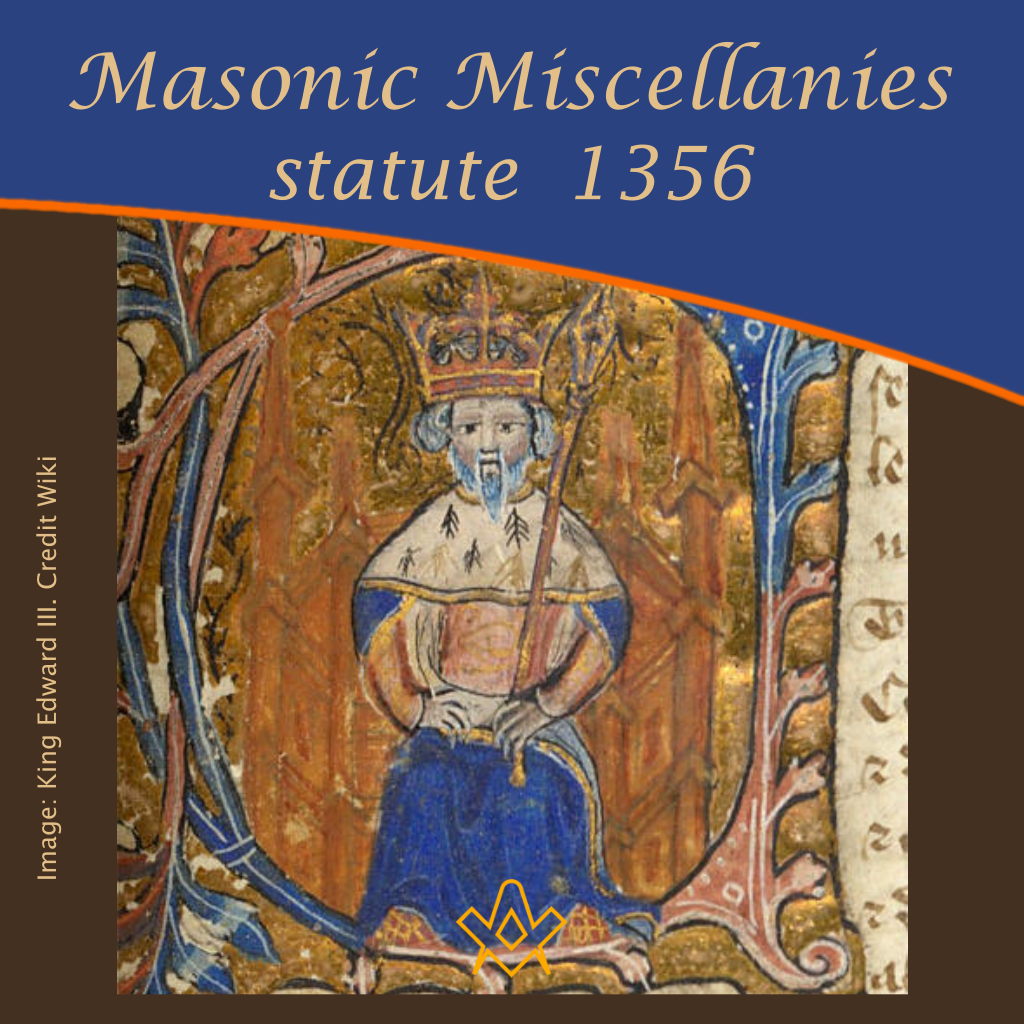Further to the reference in the article – The Builders – 6 – Free-Masons ‘a statute was enacted against the Free-masons in 1356′
Link to article: The Builders – 6 – Free-Masons
I thought I would dig out the full Statute which was issued by Edward III in 1356.
After a bit of Googling, I found it in ‘Longmans Memorials Of London And London Life In The XIIIth, XIVth, And IVth Centuries’, Edited By H T Riley, published in London by Longmans, Green and Co., 1868.
On further examination of the statute below, there is not one reference to Free-masons, but in fact, Regulations for masons who are hewers, on the one hand, and the light masons and setters on the other.
Regulations for the trade of Masons
30 Edward III. A.D. 1356. Letter-Book G. fol. xli. (Latin and Norman French.)
[In Latin] At a congregation of the Mayor and Aldermen, holden on the Monday next before the Purification of the Blessed Virgin Mary [2 February], in the 30th year of the reign of King Edward the Third etc., there being present, Simon Fraunceys, the Mayor, John Lovekyn, and other Aldermen, the Sheriffs, and John Little, Symon de Benyngtone, and William de Holbeche, Commoners, certain Articles were ordained touching the trade of Masons, in these words.—
[In French] “Whereas Simon Fraunceys, Mayor of the City of London, has been given to understand that divers dissensions and disputes have been moved in the said city between the masons who are hewers, on the one hand, and the light masons and setters on the other;
because that their trade has not been regulated in due manner, by the government of folks of their trade, in such form as other trades are;
therefore the said Mayor, for maintaining the peace of our Lord the King, and for allaying such manner of dissensions and disputes, and for nurturing love among all manner of folks, in honour of the said city,
and for the profit of the common people, by assent and counsel of the Aldermen and Sheriffs, caused all the good folks of the said trade to be summoned before him, to have from them good and due information how their trade might be best ordered and ruled, for the profit of the common people.
“Whereupon, the good folks of the said trade chose from among themselves twelve of the most skilful men of their trade, to inform the Mayor, Aldermen, and Sheriffs, as to the acts and articles touching their said trade, that is to say;
—Walter de Sallynge, Richard de Sallynge, Thomas de Bredone, John de Tyryngtone, Thomas de Gloucestre, and Henry de Yeevelee, on behalf of the masons hewers;
Richard Joye, Simon de Bartone, John de Estone, John Wylot, Thomas Hardegray, and Richard de Cornewaylle, on behalf of the light masons and setters;
the which folks were sworn before the aforesaid Mayor, Aldermen, and Sheriffs; in manner as follows.—
“In the first place,—that every man of the trade may work at any work touching the trade, if he be perfectly skilled and knowing in the same.
“Also,—that good folks of the said trade shall be chosen and sworn every time that need shall be, to oversee that no one of the trade takes work to complete, if he does not well and perfectly know how to perform such work;
on pain of losing, to the use of the Commonalty, the first time that he shall by the persons so sworn be convicted thereof, one mark; [see foonote on coins]
and the second time, two marks; and the third time, he shall forswear the trade, for ever.
“Also,—that no one shall take work in gross, [Wholesale, or by contract.] if he be not of ability in a proper manner to complete such work;
and he who wishes to undertake such work in gross, shall come to the good man of whom he has taken such work to do and complete, and shall bring with him six or four ancient men of his trade, sworn thereunto, if they are prepared to testify unto the good man of whom he has taken such work to do, that he is skilful and of ability to perform such work,
and that if he shall fail to complete such work in due manner, or not be of ability to do the same, they themselves, who so testify that he is skilful and of ability to finish the work, are bound to complete the same work well and properly at their own charges, in such manner as he undertook;
in case the employer who owns the work shall have fully paid the workman [Meaning, the contractor].
And if the employer shall then owe him any thing, let him pay it to the persons who have so undertaken for him to complete such work.
“Also,—that no one shall set an apprentice or journeyman to work, except in presence of his master, before he has been perfectly instructed in his calling:
and he who shall do the contrary, and by the persons so sworn be convicted thereof, let him pay, the first time, to the use of the Commonalty, half a mark, and the second time, one mark, and the third time, 20 shillings; and so let him pay 20 shillings every time that he shall be convicted thereof.
“Also,—that no one of the said trade shall take an apprentice for a less term than seven years, according to the usage of the City; and he who shall do to the contrary thereof, shall be punished in the same manner.
“Also,—that the said Masters, so chosen, shall oversee that all those who work by the day shall take for their hire according as they are skilled, and may deserve for their work, and not outrageously.
“Also,—if any one of the said trade will not be ruled or directed in due manner by the persons of his trade sworn thereunto, such sworn persons are to make known his name unto the Mayor;
and the Mayor, by assent of the Aldermen and Sheriffs, shall cause him to be chastised by imprisonment and other punishment;
that so, other rebels may take example by him, to be ruled by the good folks of their trade.
Footnote
Coins
Edward III coins
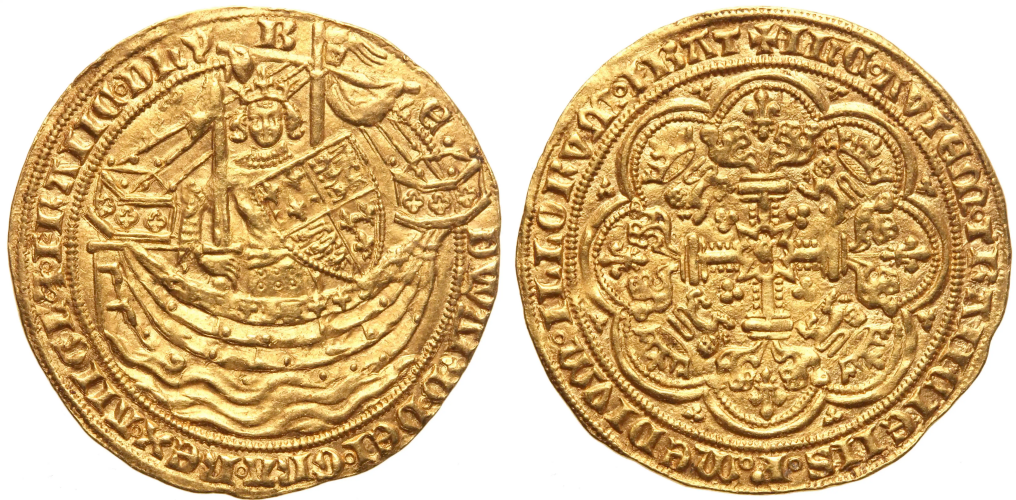
The first coins attributed to Edward III are silver pennies of the type brought in under Edward I but these were not struck in any great quantity and are rare today.
In 1335 Edward’s ‘second coinage’ was issued. This consisted entirely of slightly debased silver halfpennies and farthings minted at London and, for the first time, Reading.
These new fractional coins are often referred to as ‘star marked’ as many bear a small star of six or eight points somewhere in the legend.
After the limited issue of small silver coins in the second coinage the third coinage of 1344-51 was much more ambitious.
This coinage is commonly referred to as the ‘florin’ coinage as in 1344 it was introduced alongside a new gold coin with its half and quarter. The need for a gold coinage at this time was apparent to many, as merchants would typically use foreign gold coins for high-value transactions rather than the heavier equivalents in silver.
Source: https://www.allaboutcoins.co.uk/coin-guides/edward-iii-and-englands-medieval-coinage/
Recent Articles: Masonic Miscellanies
 Masonic Miscellanies - The Amulet of the Ladder Explore the cosmic significance of the Ladder in ancient Egyptian mythology through Wallis Budge's "Egyptian Magic." Discover how this profound symbol bridges the mortal and divine, encapsulating the Egyptians' fervent afterlife aspirations with a blend of myth, magic, and material culture. Dive into the celestial ascent of Osiris and mortal souls. |
 Masonic Miscellanies - Adulterine Gilds Guilds, the associations that shaped medieval European society, were more than just organizations of artisans and merchants. They played a vital role in the economic and social development of towns and cities. This exploration delves into the intriguing concept of adulterine gilds and their interconnectedness with guilds, offering insight into the significance of legal authorization and recognition in medieval Europe. |
 Masonic Miscellanies - Masonic Orb Discover the fascinating world of Masonic ball watch fobs, intricately crafted with tiny pyramids that form a cross when opened. These decorative accessories were all the rage in the late 1800s and early 1900s, and they still hold a certain allure today. Explore the different varieties and symbols found on these unique pieces that carry deep Masonic meaning. |
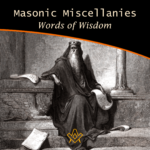 Masonic Miscellanies – Words of Wisdom Uncover timeless wisdom from King Solomon to Albert Pike in our latest Masonic Miscellanies, a treasure trove of insights for Masons. Journey through the ages and glean inspiring sayings, reflecting on their profound influence on Masonic principles. An enriching read for the enlightened. |
 Masonic Miscellanies - Symbolism of the Right Hand Unlock the enigmatic realm of Freemasonry as we delve into its age-old symbols, rituals, and philosophies. This thought-provoking exploration, drawn from Mackey's Revised Encyclopedia of Freemasonry, focuses on the iconic 'right hand' symbol - its rich history, universality, and profound significance. |
 Masonic Miscellanies - Order of the Secret Monitor Unveil the mystery of Freemasonry with 'The Order of the Secret Monitor'. Discover this lesser-known appendant order, its unique rituals, and the profound teachings it offers. Explore the bonds of friendship and brotherhood it fosters, all wrapped in an intriguing cloak of mystery. Your journey into the depths of Masonic wisdom begins here. |
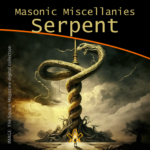 Masonic Miscellanies - The Symbol of the Serpent As a symbol, the serpent obtained a prominent place in all the ancient initiations and religions. |
 Masonic Miscellanies - The Four Veils in Royal Arch Masonry What are the four veils in Royal Arch Masonry? And what is the 'Ceremony of Passing the Veils'? Although common throughout Scotland, Ireland and the United States, it is mostly unknown in England, presently only worked in the Province of Bristol. ( and by dispensation ) |
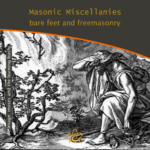 Masonic Miscellanies - Bare feet and Freemasonry A candidate for initiation into a Masonic Lodge often finds the requirements which he/she must fulfil somewhat odd. The mode of preparation often remains a puzzle, since the ritualistic explanation is not offered in full. Why are we 'slipshod' or "bare-footed" in Masonic Ritual? |
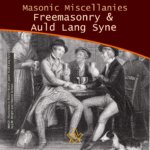 Masonic Miscellanies – Freemasonry and Auld Lang Syne Millions of people throughout the world will sing Auld Lang Syne to see out the Old Year. Few will know all the words, fewer still know what they mean, or that there is a link to Freemasonry. |
 Masonic Miscellanies - The Mosaic Pavement - why mosaic, why pavement? We are all familiar with the black and white chequered flooring of the Masonic lodge but where did it originate? There are a few theories… |
 Masonic Miscellanies – Masonic Master's Carpets Have you got a magic "Masonic Master's Carpet" in your lodge? I say 'magic' with my tongue firmly in my cheek because (as far as I know) these fabulous works of art don't bestow any mystical powers but can bestow some educational ones! However, considering their possible value today, they may magic up some interest (or funds). |
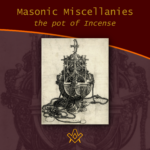 Masonic Miscellanies – The Pot of Incense Just when the pot of incense became an emblem of the third section of the Sublime Degree can not be stated with certainty. It is, apparently, an American invention or addition. But what does it symbolise? |
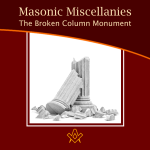 Masonic Miscellanies - The Broken Column Monument The story of the broken column was first illustrated by Amos Doolittle in the "True Masonic Chart" by Jeremy Cross, published in 1819. |
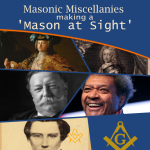 Masonic Miscellanies - Making a 'Mason at Sight' What does it mean to make a 'Mason at sight', and who was made one? |
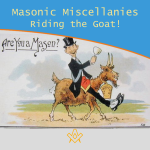 Masonic Miscellanies - Riding the Goat! Many Freemasons will have come across the phrase 'riding the goat', and will no doubt have been the butt of a joke about it (sorry, I couldn't resist!) But what does it mean and where did the phrase come from? |
 Masonic Miscellanies - What are the 'three dots'? Three dots or points in an upright triangular shape ∴ is most commonly known as the 'therefore' sign – so why is it used in Freemasonry? |
 Masonic Miscellanies - Keep Within Compass This month we discover a series of allegorical prints warning us to "Keep within Compass and you shall be sure, to avoid many troubles which others endure." |
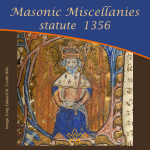 Masonic Miscellanies - statute 1356 Further to the reference in the article – The Builders - 6 - Free-Masons 'a statute was enacted against the Free-masons in 1356' – Regulations for masons who are hewers, on the one hand, and the light masons and setters on the other. |
 Masonic Miscellanies - An Anti-Masonic 'Apron'? The Anti-Masonic 'Apron' was created during the 1832 Presidential election in USA. It was not Ani-masonic. And it was not an apron. Read on to find out what and why it was created. |
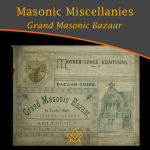 Masonic Miscellanies - Grand Masonic Bazaar (1895) Grand Masonic Bazaar (1895); to raise funds to clear the debt incurred by “Mother Kilwinning” in rebuilding their Lodge. |
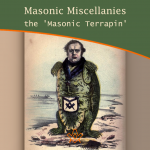 Masonic Miscellanies - the 'Masonic Terrapin' A satirical book from 1851 includes a bizarre caricature of a 'Masonic Terrapin' - all I can say is 'read on'… |
 Masonic Miscellanies - Masonic Bookplates You probably know what a bookplate is for, but did you know that the earliest known book mark/label dates from the reign of Amenhotep III in Egypt around 1391−1353 BCE?! |
 Masonic Miscellanies - Freemasonry & Bees Freemasonry & Bees - what's the buzz? The bee was among the Egyptians the symbol of an obedient people, because, says Horapollo, of all insects, the bee alone had a king. |
 Masonic Miscellanies - The mystery of the Tattooed Freemason In 1894, the body of a drowned man was found in the Bay of San Francisco - what they discovered was amazing. |
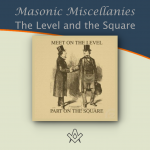 Masonic Miscellanies - The Level and the Square (A Poem) The Level and the Square (A Poem) - "We meet upon the Level, and we part upon the Square – |
 Masonic Miscellanies - The Mystic Tie What is the 'Mystic Tie'? Clue: it's not an item of neckwear! |
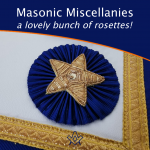 Masonic Miscellanies - A lovely bunch of rosettes! Where did the origin of the use of rosettes on Masonic aprons come from ? |
 Masonic Miscellanies - The Lodge of Sorrow The Lodge of Sorrow - Extracted General Ahiman Rezon, by Daniel Sickles, [1868] |
 Masonic Miscellanies - Memento Mori Memento Mori - a Masonic reminder to make your mark on the world |
 Masonic Miscellanies - A closer look at the Level and the Plumb-rule A closer look at the Level and the Plumb-rule |
 Masonic Miscellanies - The Symbolism of the Gloves The Symbolism of the Gloves and why Freemasons wear white gloves |
 Masonic Miscellanies - Will the real James Anderson please stand up? Will the real James Anderson please stand up? |
 Masonic Miscellanies - The Legend of the Third Degree The most important and significant of the legendary symbols of Freemasonry is, undoubtedly, that which relates to the fate of Hiram Abif. |
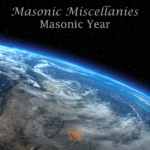 Masonic Miscellanies - Masonic Calendar Why do Freemasons use different 'years' to our regular calendar? |
 Masonic Miscellanies - What is a 'Lewis'? The English word 'Lewis' is a term belonging to operative Masonry, and signifies an iron cramp, which is inserted in a cavity prepared for the purpose in a large stone. |
 Masonic Miscellanies - From J.S.M. Ward Ever wondered why masons had to be 'free' or why we have a Tyler? |
masonic knowledge
to be a better citizen of the world
share the square with two brothers

click image to open email app on mobile device



